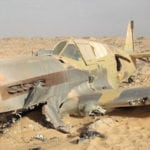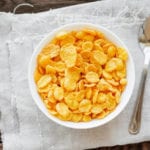 Weird Stuff
Weird Stuff  Weird Stuff
Weird Stuff  Our World
Our World 10 Ways Your Christmas Tree Is More Lit Than You Think
 Movies and TV
Movies and TV The 10 Coolest Stars to Set Sail on The Love Boat
 History
History 10 Things You Didn’t Know About the American National Anthem
 Technology
Technology Top 10 Everyday Tech Buzzwords That Hide a Darker Past
 Humans
Humans 10 Everyday Human Behaviors That Are Actually Survival Instincts
 Animals
Animals 10 Animals That Humiliated and Harmed Historical Leaders
 History
History 10 Most Influential Protests in Modern History
 Creepy
Creepy 10 More Representations of Death from Myth, Legend, and Folktale
 Technology
Technology 10 Scientific Breakthroughs of 2025 That’ll Change Everything
 Weird Stuff
Weird Stuff Ten Bizarre Facts About The Doge Meme
 Our World
Our World 10 Ways Your Christmas Tree Is More Lit Than You Think
 Movies and TV
Movies and TV The 10 Coolest Stars to Set Sail on The Love Boat
Who's Behind Listverse?

Jamie Frater
Head Editor
Jamie founded Listverse due to an insatiable desire to share fascinating, obscure, and bizarre facts. He has been a guest speaker on numerous national radio and television stations and is a five time published author.
More About Us History
History 10 Things You Didn’t Know About the American National Anthem
 Technology
Technology Top 10 Everyday Tech Buzzwords That Hide a Darker Past
 Humans
Humans 10 Everyday Human Behaviors That Are Actually Survival Instincts
 Animals
Animals 10 Animals That Humiliated and Harmed Historical Leaders
 History
History 10 Most Influential Protests in Modern History
 Creepy
Creepy 10 More Representations of Death from Myth, Legend, and Folktale
 Technology
Technology 10 Scientific Breakthroughs of 2025 That’ll Change Everything
10 People Whose Names Were Immortalized In The Oddest Ways
We’ve previously discussed people who may not be familiar today had it not been for the products bearing their names. More recently, we’ve mentioned others immortalized as foods and recipes. But there are even more people who have left legacies long after they were gone by lending their likeness to simple items, clothing lines, new technology, and even exercise routines.
10The Leotard

Jean Marie Jules Leotard was born in France in August 1838. His father owned a gymnasium, but young Jules initially aspired to become a lawyer. One day, perhaps bored at the thought of going to school, Jules was helping out in the gym when he ended up hanging a bar by stringing two ropes on both ends, resulting in the trapeze.
Despite passing his legal exams, Jules decided to experiment further with his new acrobatic invention, often practicing above a swimming pool. Jules decided to forgo a career in law, eventually joining the Cirque Napoleon in 1859. In performances, Jules used five trapezes suspended in midair, somersaulting between them.
His attire—a tight, knitted one-piece suit—gave him freedom of movement without any danger of entanglement with the wires. It also allowed him to show off his physique, to the giggles of women and the ire of men. Soon, the suit became known as the “leotard” in his honor.
In addition to the famous bodysuit, Jules Leotard also inspired a popular song. You may have heard it: “He’d fly through the air with the greatest of ease, a daring young man on the flying trapeze. His movements were graceful, all girls he could please, and my love he purloined away.”
9The Viking Bluetooth Technology

In 1998, Jim Kardach banded together with engineers and tech wizards from Ericsson, IBM, Intel, Nokia, and Toshiba with the goal of integrating mobile phones, laptops, desktops, and radios, allowing them to communicate and share data via Ericsson’s latest innovation. The groundbreaking wireless communication technology didn’t yet have a name, but during these sessions, Kardach was inspired to delve further back into the company’s Viking legacy.
Harald Gormsson was a Viking ruler who lived during the 10th century. His domains included most of Denmark and Norway and parts of Sweden. His alliances and vassals held territory from the Arctic Circle to the Wends. He also went by the nickname Blatand, or “Bluetooth.” It remains unknown how he earned the nickname, with some believing it was due to a bad tooth that turned black (the term “blue” was often used as a substitute for “black”) and others claiming that tand translated to “thane.”
Regardless, Kardach and the other engineers loved Harald’s story. Just as Bluetooth formed a number of alliances during his reign, Bluetooth technology would unite disparate products.
8Big Bertha
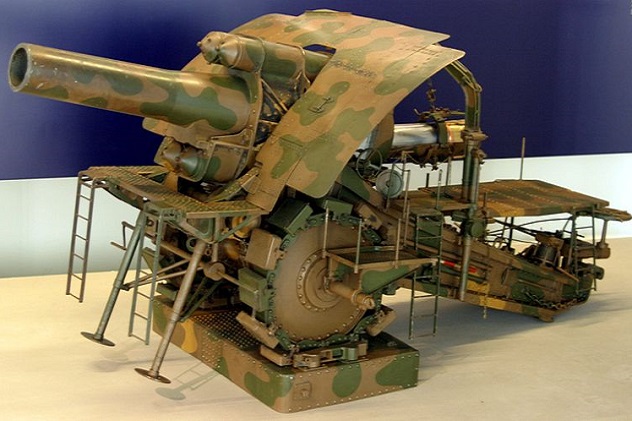
During wars, it’s not uncommon to name weapons and armaments after renowned war leaders or their developers. The Abrams, Churchill, and Bradley IFV all share this distinction, as do the M1 Garand, the Thompson submachine gun, and many more. But the name of the howitzers that bombarded British, Belgian, and French forces on the Western front came from Bertha von Bohlen, the head of the arms manufacturing company, Krupp. The Germans called them Dicke Bertha, or “Big Bertha.”
The artillery pieces were known to be the largest and most powerful at the time, propelling shells that weighed 950 kilograms (2,100 lb). Most soldiers on the opposing side mistook these cannons for their cousins, also made by Krupp: the Langer Max (“Long Max”), a railroad gun that blasted opponents during the Battle of the Marne, and the Kaiser Wilhelm Geschutz (“Emperor William Gun”), more affectionately known as the “Paris Gun” after shelling the City of Lights from 121 kilometers (75 mi) away. As the war drew to a close, “Bertha” came to be used as slang for a fat woman.
7Queens, Generals, And Victorian Fashion

Arthur Wellesley, the Duke of Wellington, contributed to Victorian fashion sense with every step, quite literally. During the Napoleonic Wars, muddy battlefields and rain had often turned the course of engagements. Frustrated that his Hessian boots often got soggy, the duke commissioned a waterproof pair from his shoemaker. The result was the knee-length plastic or rubber boots now called “Wellingtons,” better known in Australia as “Wellies.”
The Crimean War also had a notable impact on Victorian fashion. On October 25, 1854, as the Battle of Balaclava raged on, General James Brudenell led a costly assault on a fortified position that became known as the Charge of the Light Brigade. Brudenell was the 7th Earl of Cardigan, so the legendary coats that he and his men had worn at the time became known as “cardigans.”
Field Marshal Fitzroy Somerset, 1st Baron Raglan, was the man who gave the actual order to advance that led to a massive confusion. The baron earned himself a place in the fashion world due to a severe wound during the Battle of Waterloo decades in the past that resulted in the loss of his arm. It was rumored that he had his shirts custom-made with the sleeves sown separately or reaching all the way to the neckline. The design eventually became known as “raglan sleeves,” which are popular in today’s sports and active wear.
Decades later, in San Francisco, Roy Raymond was embarrassed to buy lingerie for his wife in department stores. He opened a lingerie boutique where other conservative men could browse the wares in private, complete with furnishings inspired by prudish Victorian England. He named the store Victoria’s Secret, which became the most well-known lingerie outlet in the world, raking in annual profits of over $5 billion.
But what is Queen Victoria’s actual secret? The only person who knew was Edward Jones, who was obsessed with the queen during the 1800s. Eventually, Jones wriggled his way into Buckingham Palace, sat on the throne, hid under the sofa, and even stole Victoria’s own negligee. George was sent packing to Australia, where he lived out his days drinking. George took “the secret” to the grave with him in 1893, when he fell down a bridge and hit his head while drunk.
6Jumping Jacks

General John J. Pershing served in the 10th Cavalry Regiment, a segregated African-American military unit, where he earned the nickname “Black Jack.” While Pershing was an instructor at West Point, he introduced a new form of hazing under the guise of a new training exercise for the recruits. He would line up a group of plebes and then order them to assign themselves numbers by counting off. When he pulled an imaginary string, the “odds” threw their arms out to the sides like puppets. When he pulled the string in another direction, the “odds” dropped their arms while the “evens” jumped with their legs out.
Upperclassmen laughed at the new recruits who were forced to flap their arms and legs for hours on end in what is now a legitimate exercise known as “jumping jacks.” In 2014, Pershing’s home state of Missouri even adopted his hazing method as its official state exercise.
5Starbucks
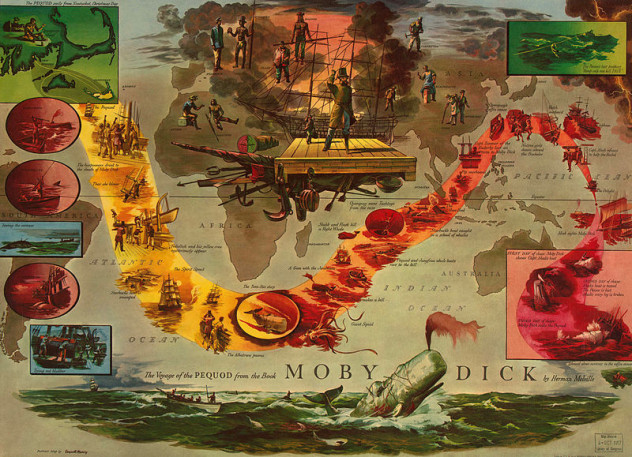
Today, Starbucks is a multinational corporation so ubiquitous that people joke about franchises across the street from each other. In 1970s Seattle, however, it was just a fledgling concept in the minds of friends Jerry Baldwin, Zev Siegl, and Gordon Bowker. The trio discovered that they shared a common interest aside from the coffee business: All three were big fans of Moby Dick. Such was their love of the tale of the whale that they wanted to name their business after it.
The first name they settled on was “Pequod,” the name of Captain Ahab’s ship, before one pointed out “Who would want to drink ‘pee-quod’?” Everyone agreed that “Starbuck,” Ahab’s first mate, was a better suggestion. The business’s tagline initially described Starbuck as “the coffee-loving first mate of the ship,” which led to complaints from the Hermann Melville Society, who pointed out that Starbuck never drinks coffee in the novel.
4Geronimo: Paratroopers And Osama bin Laden

Legendary Apache war chief Geronimo was a hero among the Native Americans for his staunch defense against the United States government. He perpetually escaped US clutches, even when he fought alongside famed warrior Kas-tziden Nana, who surrendered in March 1886. He was finally captured on September 4 and lived out the rest of his days as a prisoner at Fort Still until he died of pneumonia on February 17, 1909.
Geronimo’s name is spoken in awe by his fellow tribesmen, but it spread to popular culture during the 1940s thanks to the 1939 film Geronimo! Reportedly, a group of paratroopers training at Fort Benning, Georgia attended a screening and later chided one another for being afraid of jumping from thousands of feet in the air. The next day, Private Aubrey Eberhardt thought of a word that could be heard by everyone on the plane and on the ground below and shouted “Geronimo!” The war cry gradually became synonymous with the brave men of paratrooper regiments, and as time passed, it signified a general exhortation to prove one’s derring-do.
Unfortunately, Geronimo’s name recently became much maligned due to its association with Osama bin Laden, who President Obama confirmed was code-named “Geronimo” during the US government’s investigation. The code name referred to Bin Laden’s continued defiance and evasion, but many Native Americans were understandably disgusted by the comparison. Geronimo’s great-grandson, Vietnam veteran Harlan Geronimo, even demanded an apology for the insult.
3Queen Anne’s Revenge

There are many places and items named after Queen Anne of Great Britain, from furniture and architecture to the city of Annapolis, Maryland. Possibly the weirdest, though, is the pirate ship that bore her name, Blackbeard’s Queen Anne’s Revenge.
The meaning of the name chosen by the man born Edward Teach for his flagship is steeped in history. After the English Protestant community turned against the pro-Catholic King James and overthrew him in 1688, his Protestant daughter Mary and her husband William stepped in as his replacements. When Mary and William died childless, James’s daughter Anne ascended to the throne. While she endured a staggering 16–18 pregnancies, her oldest surviving child died at age 11 of smallpox, so she also left no heirs.
Soon after, the Act of Settlement of 1701 was established to preserve the union of the crowns and guarantee that the inheritance passes to a Protestant. After Anne’s death, over 50 Catholic relatives were disqualified from inheritance, leaving German Protestant George of Hanover next in line to the throne.
Those loyal to King James, who called themselves the Jacobites, worked ceaselessly to regain control of the crown to no avail. As it happens, one of the most notorious pirates in history was among these loyalists, as were many other pirates. When the rule of Britain passed from a Briton to a German, he considered it such an insult that he rechristened the captured French ship Concorde with a name more befitting his intention to avenge his fallen lady.
2The Mario Bros.
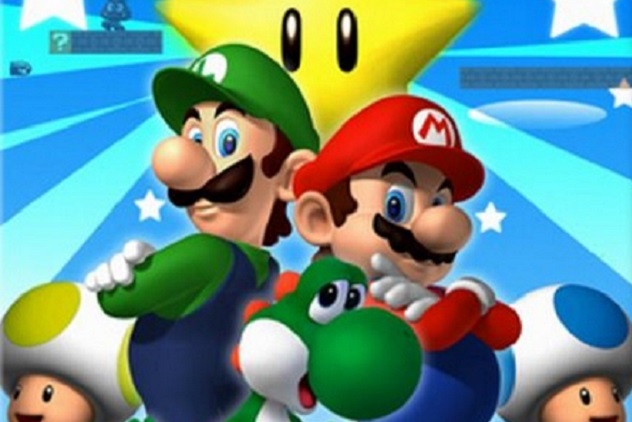
Nintendo, which means “leave luck to heaven,” can trace its origins all the way back to 1889. For several decades, they were only known as a company that produced playing cards. When they first took a crack at the video game industry, it wasn’t as manufacturers or developers but as distributors, securing the rights to sell the Magnavox Odyssey in Japan in 1972.
By 1975, video games were the focus of the company. Shigeru Miyamoto created Donkey Kong, the game where the player must conquer his way to the top of the level while a giant ape throws things at him. The concept of the game was initially slightly different—it was supposed to be based on Popeye the Sailor Man, but Miyamoto could not obtain the rights to the character. Instead, Bluto became Donkey Kong, Olive Oyl became the damsel in distress, and Popeye became Jumpman.
Miyamoto then decided that the Jumpman character, renamed “Mr. Video,” would be featured in all future Nintendo games. He was renamed a second time when, as legend has it, Nintendo employees began calling him “Mario” after the struggling company’s greedy landlord, Mario Segale. According to another legend, the other half of the Mario Bros. was named after a pizza parlor that was located across the street from their warehouse.
1Molotov Cocktails
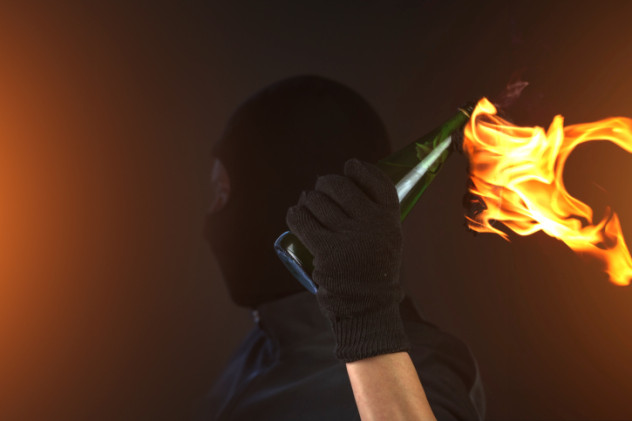
Before the start of World War II, the Soviet Union and Germany made an unholy alliance known as the Molotov-Ribbentrop Pact. This agreement, named after the ministers who represented the two respective nations, ensured the partition of Poland between the Nazis and Soviets and the latter’s unchecked advance into the Baltic States and Finland. The Finns, who were quite angry about this turn of events, could do nothing but prepare.
When the Winter War between the Soviet Union and Finland erupted late in 1939, Soviet minister Vyacheslav Molotov reported that the Red Air Force flying over Finnish territory were not dropping bombs but food parcels. According to Molotov, “the Finnish people were starving,” and the aircraft were there to help. The Finns came to call these bombs “Molotov’s bread baskets.”
The Finns proved to be very tough adversaries. Soviet casualties mounted despite its military and reserves outnumbering the entire Finnish population. One of the best weapons the Finns used against the Communists was a gasoline-filled bottle that caused severe burns and even death when lit and thrown. The weapon was first used by the Ethiopians during the Abyssinian War against Italy, but the Finns mass-produced and named them. The “Molotov cocktail,” the Finns said, was “a drink to go along with their food.”
Jo Rodriguez wishes that one day his name would be immortalized in the form of ice cream bars. We could call them “Jo’s Rods.” Then again, they probably won’t sell well, as women would avoid buying them. Poor guy!

